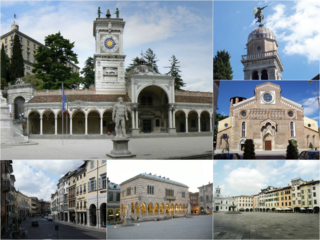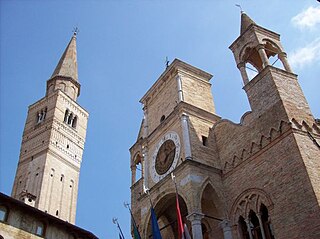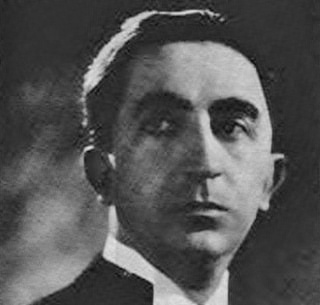
Palazzo del Cinema di Venezia is the place that hosts the Venice Film Festival and congress activities, located in Lido di Venezia, Venice, Italy.

Palazzo del Cinema di Venezia is the place that hosts the Venice Film Festival and congress activities, located in Lido di Venezia, Venice, Italy.
There are three theaters in Palazzo del cinema: la Sala Grande with over 1 032 seats, the Zorzi (48 seats) and Pasinetti (119 seats) theatres.
The first cinema exhibition was held on the terrace of the Hotel Excelsior on August 6, 1932. But, with the growing success, it became necessary to build a proper and prestigious venue; this took place between 1936 and 1937, based on a project by the engineer Luigi Quagliata, faithful to the dictates of modernism. The Casino was built in the same area, based on a project by the Chief Engineer of the Municipality, Eugenio Miozzi, who also took care of the layout of the entire area where the Austrian Fort of the Quattro Fontane stood. The urban plan envisaged the symmetrical construction of three buildings in the rationalist style, with the Casino in the center, the cinema building on the left and a third mirror building on the right, intended to house an ice skating rink, which was not built due to the onset of the Second World War. The Palazzo del Cinema, inaugurated on 10 August 1937 for the fifth edition of the Exhibition was then made up of a simple hall and a thousand-seat cinema hall (the present Great Hall). Following the continuous success of the festival, it became necessary to expand the building, which was entrusted to Quagliata himself in 1952. The overall project included the expansion of the Great Hall, an open arena, other cinemas, offices and services. ; but only the forepart and the uncovered arena were built.

The Venice Film Festival or Venice International Film Festival is an annual film festival held in Venice, Italy. It is the world's oldest film festival and one of the "Big Five" International film festivals worldwide, which include the Big Three European Film Festivals, alongside the Toronto Film Festival in Canada and the Sundance Film Festival in the United States.These festivals are internationally renowned for giving creators the artistic freedom to express themselves through film. In 1951, FIAPF formally accredited the festival.

The Doge's Palace is a palace built in Venetian Gothic style, and one of the main landmarks of the city of Venice in northern Italy. The palace was the residence of the Doge of Venice, the supreme authority of the former Republic of Venice. It was built in 1340 and extended and modified in the following centuries. It became a museum in 1923 and is one of the 11 museums run by the Fondazione Musei Civici di Venezia.

Udine is a city and comune (municipality) in northeastern Italy, in the middle of the Friuli-Venezia Giulia region, between the Adriatic Sea and the Carnic Alps. It is the capital of the Regional decentralization entity of Udine. Its population was 100,514 in 2012, 176,000 with the urban area.

The Lido, or Venice Lido, is an 11-kilometre-long (7-mile) barrier island in the Venetian Lagoon, Northern Italy; it is home to about 20,400 residents. The Venice Film Festival takes place at the Lido late August/early September.

The Venice Biennale is an international cultural exhibition hosted annually in Venice, Italy by the Biennale Foundation. The biennale has been organised every year since 1895, which makes it the oldest of its kind. The main exhibition held in Castello, in the halls of the Arsenale and Biennale Gardens, alternates between art and architecture. The other events hosted by the Foundation—spanning theatre, music, and dance—are held annually in various parts of Venice, whereas the Venice Film Festival takes place at the Lido.

Cannaregio is the northernmost of the six historic sestieri (districts) of Venice. It is the second largest sestiere by land area and the largest by population, with 13,169 people as of 2007.

Vincenzo Scamozzi was an Italian architect and a writer on architecture, active mainly in Vicenza and Republic of Venice area in the second half of the 16th century. He was perhaps the most important figure there between Andrea Palladio, whose unfinished projects he inherited at Palladio's death in 1580, and Baldassarre Longhena, Scamozzi's only pupil.

Andrea Palladio was an Italian Renaissance architect active in the Venetian Republic. Palladio, influenced by Roman and Greek architecture, primarily Vitruvius, is widely considered to be one of the most influential individuals in the history of architecture. While he designed churches and palaces, he was best known for country houses and villas. His teachings, summarized in the architectural treatise, The Four Books of Architecture, gained him wide recognition.

The Grand Canal is a channel in Venice, Italy. It forms one of the major water-traffic corridors in the city.

Pordenone is a city and comune (municipality) in the Italian region of Friuli-Venezia Giulia, the capital of the Regional decentralization entity of Pordenone.

The Procuratie are three connected buildings along the perimeter of Saint Mark's Square in Venice, Italy. Two of the buildings, the Procuratie Vecchie and the Procuratie Nuove, were constructed by the procurators of Saint Mark, the second-highest dignitaries in the government of the Republic of Venice, who were charged with administering the treasury of the Church of Saint Mark as well as the financial affairs of state wards and trust funds established on behalf of religious and charitable institutions.

Ca' Foscari, the palace of the Foscari family, is a Gothic building on the waterfront of the Grand Canal in the Dorsoduro sestiere of Venice, Italy.

The Palazzo Venezia or Palazzo Barbo, formerly Palace of Saint Mark, is a large early Renaissance palace in central Rome, Italy, situated to the north of the Capitoline Hill. Today the property of the Republic of Italy it houses the National Museum of the Palazzo Venezia. The main (eastern) facade measures 77 metres in length, with a height of about 31 metres. The north wing, containing the "Cibo Apartment", extending westwards, measures 122 metres in length. It covers an area of 1.2 hectares and encloses two gardens and the Basilica of Saint Mark. It was built in the present form during the 1450s by Cardinal Pietro Barbo (1417-1471), titular holder of the Basilica of Saint Mark, who from 1464 ruled as Pope Paul II. Barbo, a Venetian by birth as was customary for cardinals of the Basilica of Saint Mark, lived there even as pope and amassed there a great collection of art and antiquities. During the first half of the 20th century it became the residence and headquarters of the fascist dictator Benito Mussolini, who made notable orations from its balcony to huge crowds filling the Piazza Venezia.
Venice Biennale of Architecture is an international exhibition of architecture from nations around the world, held in Venice, Italy, every other year. It was held on even years until 2018, but 2020 was postponed to 2021 due to the COVID-19 pandemic shifting the calendar to uneven years. It is the architecture section under the overall Venice Biennale and was officially established in 1980, even though architecture had been a part of the Venice Art Biennale since 1968.

Iuav University of Venice is a university in Venice, Italy. It was founded in 1926 as the Istituto Universitario di Architettura di Venezia as one of the first Architecture schools in Italy. The university currently offers several undergraduate, graduate and higher education courses in Architecture, Urban Planning, Fashion, Arts, and Design.

Ca' Loredan Vendramin Calergi is a 15th-century palace on the Grand Canal in the sestiere (quarter) of Cannaregio in Venice, northern Italy. It was commissioned by the patrician Loredan dynasty, namely Andrea Loredan, and paid for by Doge Leonardo Loredan, with construction starting in 1481. The architecturally distinguished building was the home of many prominent people through history and was the place where composer Richard Wagner died.

Florestano Di Fausto was an Italian architect, engineer and politician who is best known for his building designs in the Italian overseas territories around the Mediterranean. He is considered the most important colonial architect of the Fascist age in Italy and has been described as the "architect of the Mediterranean". Uncontested protagonist of the architectural scene first in the Italian Islands of the Aegean and then in Italian Libya, he was gifted with a remarkable preparation combined with consummate skills, which allowed him to master and to use indifferently and in any geographical context the most diverse architectural styles, swinging between eclecticism and rationalism. His legacy, long neglected, has been highlighted since the 1990s.

Palazzo Patriarcale is a palace in the Piazzetta dei Leoncini, Venice, Italy. It is the seat of the Patriarchate of Venice.

Palazzetto Venezia is a Renaissance palace situated on one side of Piazza Venezia, in the historic center of Rome, Italy.

The history of the Doge's palace in Venice begins in medieval times and continues with numerous extensions, renovations and demolitions aimed at adapting the building to the new needs of the city and in particular to the need to give a seat to the governing bodies that, increasing in number, began to complement the doge in the administration, depriving him of certain powers and decreasing the space at his disposal.